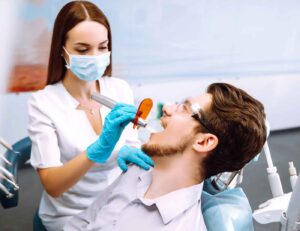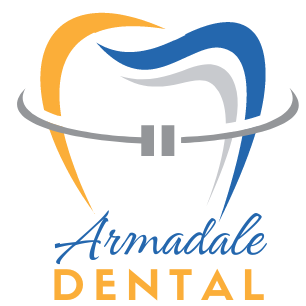Unlocking the Secrets of Preventive Dentistry: A Comprehensive Guide
Preventive dentistry is not just a buzzword; it’s a commitment to your overall health and well-being. The journey to a radiant smile and strong oral health starts with understanding the principles of preventive dentistry. In this guide, we’ll explore everything you need to know about preventive dentistry, from its core principles to practical tips you can implement at home.

The Foundation: Daily Care and Regular Checkups
At the heart of preventive dentistry lies a simple truth – regular care and attention. The Canada Dental Association advocates for a combination of daily oral hygiene practices and scheduled dental visits. These aren’t arbitrary recommendations; they are the pillars that can help you avoid common oral health issues like cavities, gingivitis, and tooth sensitivity.
The Consequences of Neglect
Neglecting preventive methods can set off a chain reaction in your dental health. Tooth decay, gum disease, and other oral health issues, if left unchecked, can snowball into more significant problems. Beyond the immediate discomfort, these issues can lead to a considerable drain on your finances, time, and overall well-being.
Enter Armadale in Ontario, where the focus extends beyond just preventive dentistry. This clinic prioritizes biological treatments that not only preserve your dental structure but also contribute to your holistic health. Scheduling an appointment here isn’t just about a checkup; it’s an investment in your overall well-being.
Understanding Preventive Dentistry
Preventive dentistry isn’t just about fixing problems when they arise; it’s about avoiding them in the first place. This involves regular visits to the dentist, even when you don’t have immediate oral health complaints.
Dental treatments in preventive dentistry can take various forms. Fluoride treatments are often employed to combat early tooth decay. Probiotics may be recommended to balance the microbiome in your mouth. Sometimes, the advice might be as straightforward as changing your diet or altering your flossing technique.
Importantly, preventive dental work can simultaneously treat existing issues while preventing future problems. For instance, orthodontic braces not only align teeth for aesthetic reasons but can prevent potential issues like TMJ disorder and even sleep apnea. Fillings, while addressing existing cavities, also prevent the spread of infections.
The Main Goal: Prevention for a Better Quality of Life
The primary objective of preventive dentistry is crystal clear – to prevent oral health problems from developing. This includes common issues like cavities and gingivitis, as well as less-discussed problems like halitosis and thrush. The overarching goal is not just to save you money but to enhance your overall quality of life.
The Three Levels of Prevention in Dentistry
- Primary Prevention: This involves entirely preventing a disease, such as tooth decay, from developing in the first place. It’s a foundation that should be laid early in life.
- Secondary Prevention: Here, the focus is on slowing, stopping, or reversing a disease that has already begun to develop. If early signs of cavities are noticed, for instance, steps can be taken to address the decay.
- Tertiary Prevention: This level involves slowing or stopping a fully-developed condition from spreading. It’s a form of rehabilitation or symptom management.
Key Elements of Preventive Dentistry
Effective preventive dentistry involves a combination of professional care and personal habits. Here are key elements you should incorporate:
- Daily Oral Hygiene:
- Brush your teeth twice a day using a soft-bristle toothbrush, aiming at a 45° angle towards your gum line.
- Opt for a sonic toothbrush with a replaceable brush head.
- Replace your brush head every three months.
- Floss once a day before brushing.
- Dental Checkups:
- Visit your dentist 1-2 times a year for a cleaning and check-up.
- Schedule oral exams, including oral cancer screenings.
- Dietary Considerations:
- Consume a balanced diet that’s friendly to your oral microbiome.
- Incorporate foods rich in calcium, phosphorus, magnesium, and fiber.
- Limit the intake of sugary, starchy, or acidic foods and drinks.
- Additional Practices:
- Rinse your mouth after consuming sugary, starchy, or acidic food and drink.
- Consider oral probiotics to balance the good bacteria in your mouth.
Preventive Dental Care Starts at Home
Your home is where the foundation of preventive dentistry is laid. Here are practical tips for an oral hygiene routine that mitigates or prevents oral health issues:
- Choosing the Right Tools:
- Use a soft-bristle toothbrush, avoiding medium or hard bristles.
- Opt for a sonic toothbrush with a replaceable head.
- Routine Maintenance:
- Replace your brush head every three months to maintain effectiveness.
- Floss daily before brushing to address interdental plaque.
- Hygiene Practices:
- Air-dry your toothbrush away from the toilet to prevent contamination.
- Rinse your mouth with water, not alcohol-based mouthwash, after consuming sugary, starchy, or acidic substances.
- Dietary Choices:
- Adopt a tooth-friendly diet – low in carbs but high in calcium and fiber.
- Consider oral probiotics to maintain a balanced oral microbiome.
The Best Way to Prevent Tooth Decay
Preventing tooth decay involves a multi-faceted approach:
- Daily Care:
- Brush and floss every day.
- Professional Care:
- Visit your dentist twice a year for checkups and cleanings.
- Dietary Adjustments:
- Consider adjustments in your diet to promote oral health.
Preventive Dental Care Diet
A teeth-friendly diet is crucial in preventing oral health problems. Consider incorporating these elements into your diet:
- Water: Stay hydrated for overall health.
- Calcium: Found in dairy products and leafy greens, it’s essential for strong teeth.
- Phosphorus: Present in whole grains, nuts, and fatty fish, it supports tooth enamel.
- Magnesium: Found in nuts, leafy greens, and whole grains, it contributes to overall oral health.
- Fiber: Promotes saliva production and is found in fruits, vegetables, and whole grains.
- Limit or Avoid:
- Sticky foods like candy or dried fruit.
- Sodas, fruit juices, and energy drinks.
- Highly acidic foods like citrus.
- Constant carbs, including from bread.
- Alcohol.
Preventive Dentistry for Kids
The significance of pediatric dentistry is often underestimated. Early education in proper oral hygiene is crucial, even before permanent teeth emerge.
- Home Practices:
- Children should start learning about brushing as soon as they get a tooth.
- Use a pea-sized amount of toothpaste to minimize the risk of adverse events due to swallowing.
- Professional Services:
- Dental sealants and cleanings are vital for preventing tooth decay in kids.
- Fluoride treatments, while effective, should be approached with parental consideration of associated risks.
Do All Dentists Offer Preventive Care?
While most dentists and dental hygienists include preventive measures in regular checkups, some practitioners go above and beyond. Functional, holistic, integrative, or biological dentists focus extensively on preventing oral health problems and addressing systemic health issues originating in the mouth.
Is Preventive Dentistry Expensive?
The cost of preventive dentistry is an investment in long-term oral health. Many dental insurance plans cover two preventive dental visits per year, but the coverage may vary. The average cost of a dental checkup ranges from $90 to $500, with insurance often covering a significant portion. Exploring new patient specials in dental offices can be a cost-effective way to initiate preventive care.
Benefits of Preventive Dentistry
The advantages of preventive dentistry are far-reaching:
- Prevention of Costly Issues:
- Cavities, gum disease, enamel loss, and other problems are nipped in the bud, saving significant costs.
- Holistic Benefits:
- Children develop strong adult teeth, leading to better health outcomes.
- Teens and young adults avoid the pitfalls of unaddressed oral health issues, fostering better health and social outcomes.
- Adults retain their natural teeth into later life.
- Older adults continue to benefit from prevention, reducing the risk of systemic issues like heart disease and dementia.
- Overall Health Impact:
- Good oral health is linked to overall well-being, reducing the risk of secondary systemic health problems.
- Financial Savings:
- Practicing preventive dentistry can save money in the long run by avoiding costly treatments for advanced oral health issues.
In conclusion, preventive dentistry is not merely a set of practices; it’s a philosophy that prioritizes your health and well-being. By embracing daily oral care, regular professional checkups, and a holistic approach to health, you’re not just preserving your smile – you’re investing in a healthier, happier you. So, schedule that dental appointment, pick up that floss, and let preventive dentistry pave the way for your radiant smile and lasting health.
